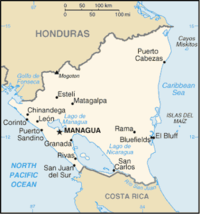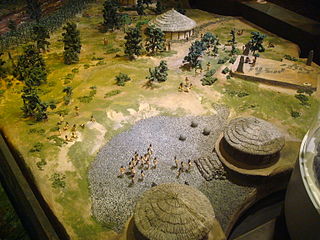
The first indigenous peoples of Costa Rica were hunters and gatherers, and when the Spanish conquerors arrived, Costa Rica was divided in two distinct cultural areas due to its geographical location in the Intermediate Area, between Mesoamerican and the Andean cultures, with influences of both cultures.

William Walker was an American physician, lawyer, journalist, and mercenary. In the era of the expansion of the United States, driven by the doctrine of "manifest destiny", Walker organized unauthorized military expeditions into Mexico and Central America with the intention of establishing private colonies. Such an enterprise was known at the time as "filibustering".

Juan Rafael Mora Porras was President of Costa Rica from 1849 to 1859.

Alajuela is a province of Costa Rica. It is located in the north-central part of the country, bordering Nicaragua to the north. It also borders the provinces of Heredia to the east, San José to the south, Puntarenas to the southwest and Guanacaste to the west. As of 2011, the province had a population of 885,571. Alajuela is composed of 16 cantons, which are divided into 111 districts. It covers an area of 9,757.53 square kilometers.

Guanacaste is a province of Costa Rica located in the northwestern region of the country, along the coast of the Pacific Ocean. It is bordered by Nicaragua to the north, Alajuela Province to the east, and Puntarenas Province to the southeast. It is the most sparsely populated of all the provinces of Costa Rica. The province covers an area of 10,141 square kilometres (3,915 sq mi) and as of 2010, had a population of 354,154, with annual revenue of $2 million.

Juan Santamaría Rodríguez was a drummer in the Costa Rican army, officially recognized as the national hero of his country for his actions in the 1856 Second Battle of Rivas, in the Filibuster War. He died in the battle carrying a torch he used to light the enemy stronghold on fire, securing a victory for Costa Rica against American mercenary William Walker and his imperialist forces. Thirty five years after his death, he began to be idealized and was used as a propaganda tool to inspire Costa Rican nationalism. A national holiday in Costa Rica, Juan Santamaría Day, is held annually on April 11th to commemorate his death.

Liberia is a district and the largest city in the Guanacaste Province of Costa Rica, located 215 kilometres (134 mi) northwest of the national capital, San José, which is also in the Guanacaste canton. It is a major center for the country's tourism industry.

Patricio Rivas was a wealthy liberal Nicaraguan lawyer and politician, member of the Democratic Party, who served as Acting Supreme Director of Nicaragua from June 30, 1839 to July 27, 1839 and from September 21, 1840 to March 4, 1841. Later he served as a President of one of the several competing governments of Nicaragua from October 30, 1855 to June 24, 1857. However, he was merely a puppet president; rule was held by William Walker.

In the 19th century, Nicaragua was beset by political problems, allowing William Walker, an American Southerner seeking to establish English-speaking slavery states in Latin America, to ascend to the Nicaraguan presidency.
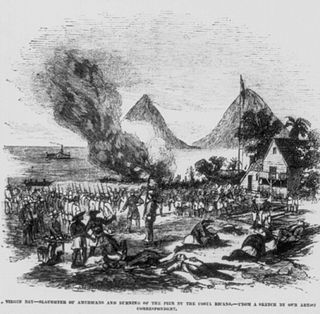
The Filibuster War or Walker affair was a military conflict between filibustering multinational troops stationed in Nicaragua and a coalition of Central American armies. An American mercenary William Walker invaded Nicaragua in 1855 with a small private army. He seized control of the country by 1856, but was ousted the following year.

Santa Rosa National Park, is a national park, in Guanacaste Province, northwestern Costa Rica, it was created in 1966 by decree 3694.
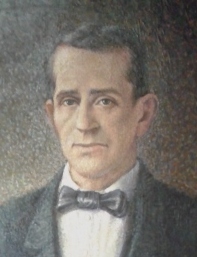
José María Cañas Escamilla was a Salvadoran military figure. He was born in Suchitoto, El Salvador.
The First Battle of Rivas occurred on June 29, 1855, as part of the struggle to resist William Walker, an American filibuster, adventurer and mercenary who arrived in Nicaragua with a small army of mercenaries in June 1855 in support of the Liberal democratic government of General Francisco Castellón in the Nicaraguan civil war. His army, with local support, was able to defeat the Legitimist party (Aristocratic) and conclude the Nicaraguan civil war.

Máximo Jerez Tellería was a 19th-century Nicaraguan politician, lawyer and military leader. He is considered to be one of the greatest Liberal political thinkers in Nicaraguan history. He was a leader of the movement towards Central American unity.
The Cañas–Jerez Treaty between Costa Rica and Nicaragua was enacted April 15, 1858 as a solution to the growing border tension between the two countries. The treaty was negotiated between Máximo Jerez representing Nicaragua and José María Cañas representing Costa Rica. It established a border between the two countries that skirts the southern edge of Lake Nicaragua, then moves east along the San Juan River for the last third of the division, following it north from where it forks from the Rio Colorado. The treaty puts the border on the right bank of the river, giving the river to Nicaragua, but provides commercial navigation rights to Costa Rica.
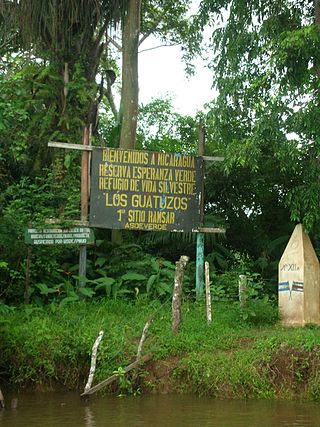
The Costa Rica–Nicaragua border is the 309 kilometres (192 mi) long international border, extending east–west, between the Caribbean Sea (E) and the Pacific Ocean (W) it separates the northern part of Costa Rica from the Southern part of Nicaragua. It passes near Lake Nicaragua. The southern bank of the River San Juan lies on the border for much of its length.
National Border Route 1856, whose official name is Ruta Juan Rafael Mora Porras, and is also known as trocha fronteriza, is an abandoned dirt road in Costa Rica on the south bank of the San Juan River.
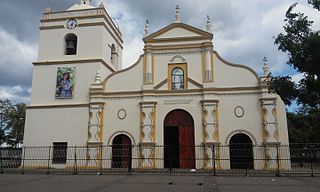
The Battle of Masaya took place in the small town of Masaya, northwest of William Walker’s filibuster capital, Granada. It was part of Walker’s efforts to dislodge the resurgent Allied Central American Army from its fortifications in Masaya, which lay within a day’s march of his capital. After significant initial filibuster advances were made, Walker’s army was forced to retreat towards Granada after receiving notice that the city was under attack.

The action of 23 November 1856 was a minor naval engagement during the Filibuster War between the Nicaraguan (Filibusters) schooner Granada and the Costa Rican brig Once de Abril, which took place off San Juan del Sur, Nicaragua.

